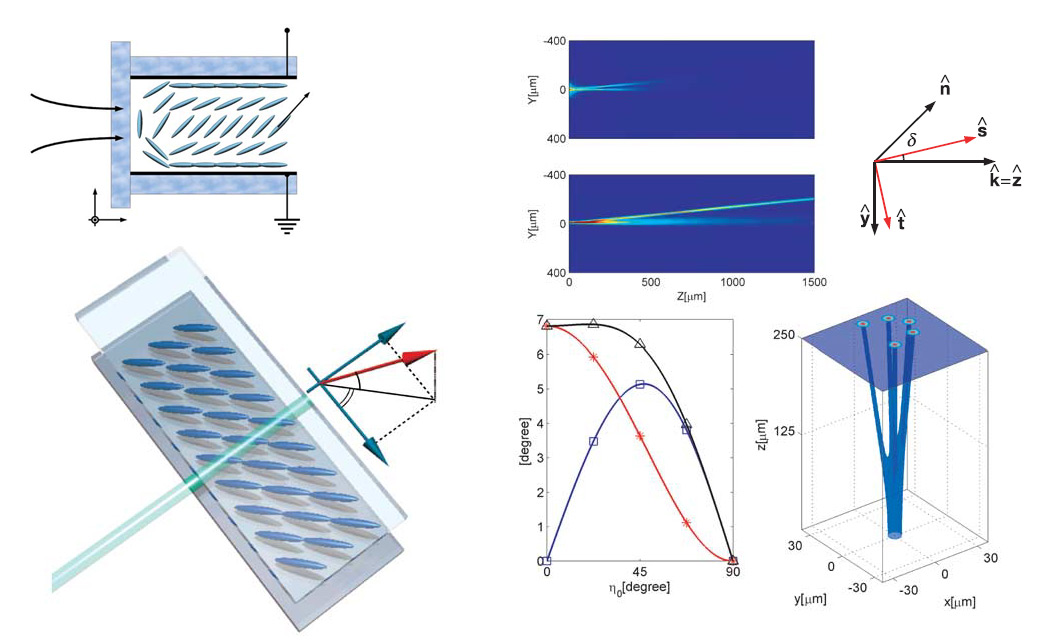M. Peccianti, C. Conti, G. Assanto, A. De Luca & Cesare Umeton
1 - NooEL (Nonlinear Optics and Optoelectronics Laboratory), National Institute for the Physics of Matter (INFM) and Department of Electronic Engineering, University “Roma Tre”, Via della Vasca Navale, 84, 00146 Rome, Italy
2 - LICRYL (Liquid Crystals Laboratory), National Institute for the Physics of Matter (INFM), Center of Excellence CEMIF.CAL and Department of Physics, University of Calabria, 87036 Arcavacata di Rende (CS), Italy
Abstract
In certain materials, the spontaneous spreading of a laser beam (owing to diffraction) can be compensated for by the interplay of optical intensity and material nonlinearity. The resulting nondiffracting beams are called ‘spatial solitons’, and they have been observed in various bulk media. In nematic liquid crystals7–9, solitons can be produced at milliwatt power levels and have been investigated for both practical applications13 and as a means of exploring fundamental aspects of light interactions with soft matter. Spatial solitons effectively operate as waveguides, and so can be considered as a means of channelling optical information along the self-sustaining filament. But actual steering of these solitons within the medium has proved more problematic, being limited to tilts of just a fraction of a degree. Here we report the results of an experimental and theoretical investigation of voltage-controlled ‘walk-off ’ and steering of self-localized light in nematic liquid crystals. We find not only that the propagation direction of individual spatial solitons can be tuned by several degrees, but also that an array of direction-tunable solitons can be generated by modulation instability. Such control capabilities might find application in reconfigurable optical interconnects, optical tweezers and optical surgical techniques.

